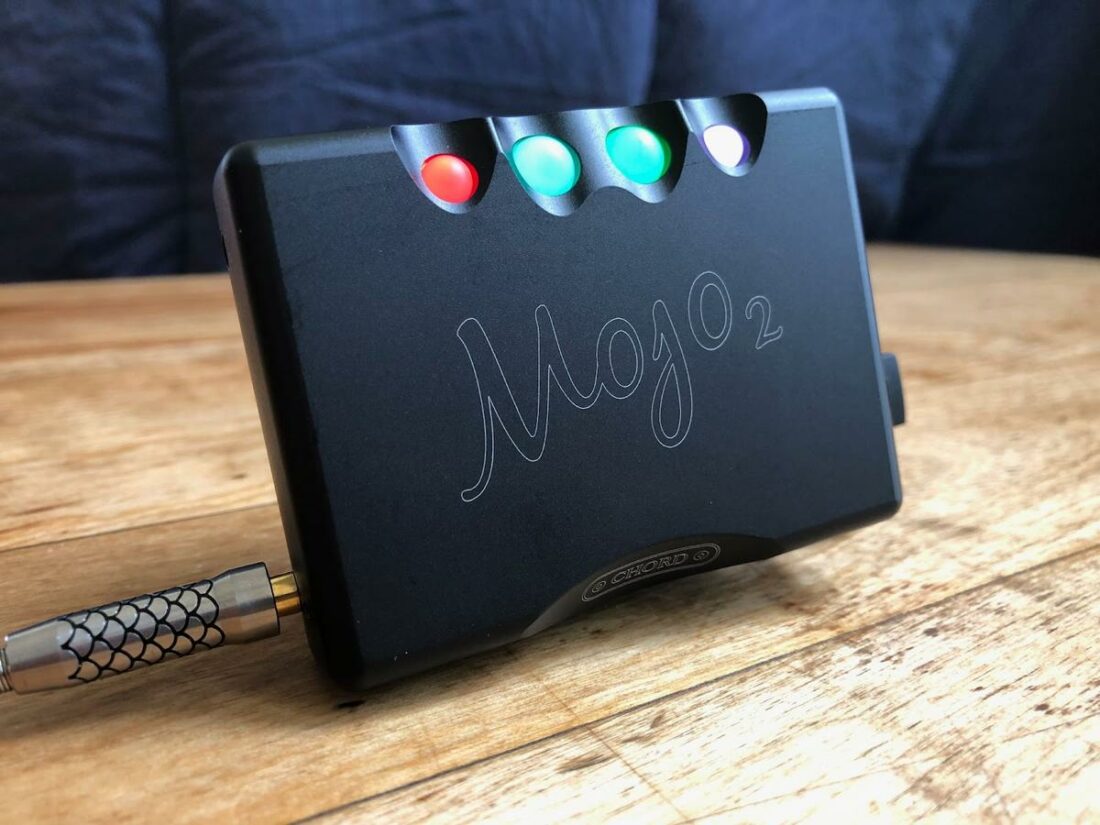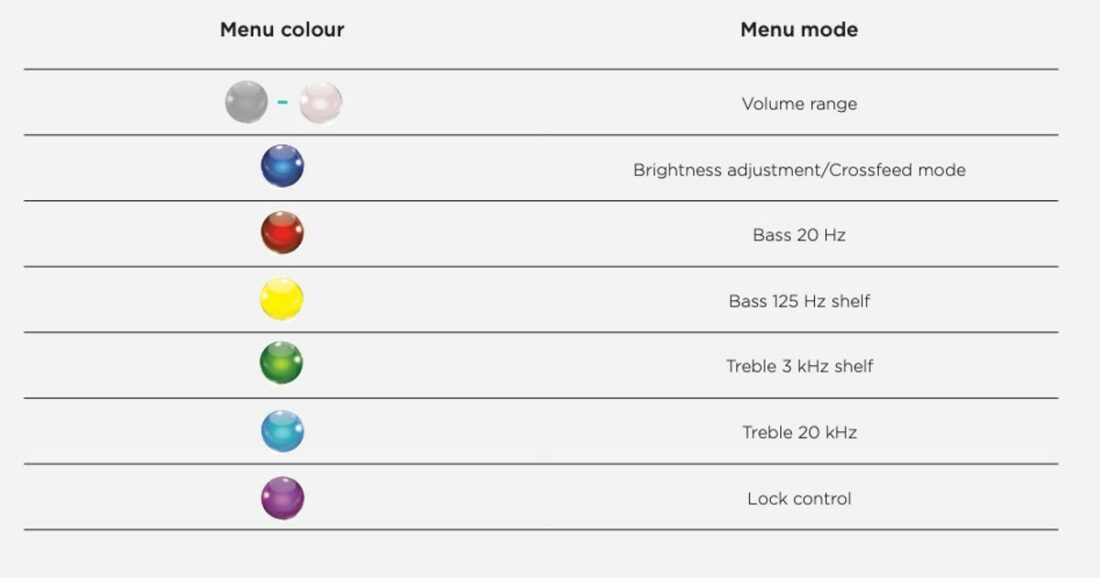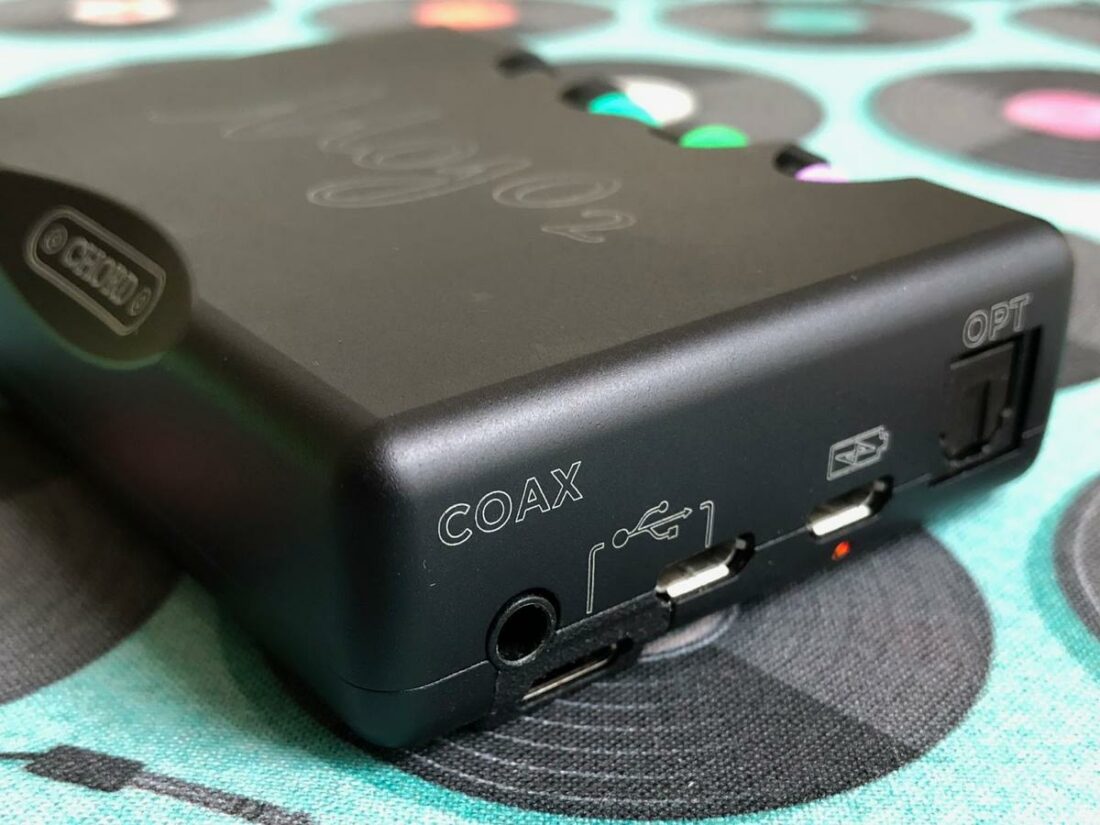Who says the sequel never lives up to the original?
Mobile Joy.
It’s right there in the name. Of all the portable products that have come and gone in my life, only one has remained. The original Mobile Joy, or Mojo to its friends, has been my go-to source for evaluating scores of IEMs and headphones and for just about all my pleasure listening on-the-go.
That is, until now. Out with the old Mojo, in with the new Mojo 2!
The Mojo 2 looks very similar to the original. It’s got the same quirky black aluminum case, although now there are 4 glowing multi-colored balls of various sizes vs the original 3. All the same inputs and outputs are there, with a new USB-c data port stuck on.
But it’s not the outside where the Mojo has really changed.
- Clear and transparent sound
- Compatible with nearly every headphone and IEM
- Improved dynamics over the original
- Full-featured EQ
- Crossfeed
- The distinct Chord design language
- Impeccable build quality
- Two headphone outputs
- Deciphering the menus and colors requires the manual
- Still using micro-USB for Poly compatibility
- USB-c port awkwardly added
Inside we still find an FPGA chip programmed by Chord designer Rob Watts, but this time we also get DSP crossfeed and EQ. The battery controller gets a much-needed upgrade with an ‘intelligent desktop’ charge management mode to improve lifespan and reduce heat when plugged in full-time for desktop use.
Those of us (and there are many) who love the Mojo were very excited to hear a revised version was in the works. Well, the Mojo 2 came out in 2022, and I’ve been living with it for many months now.
Austin Powers references aside, the film industry has taught us that sometimes the sequel doesn’t always live up to the original. (In Don LaFontaine’s best movie trailer voice): “In a world where inexpensive portable audio keeps churning out redundant sequels… one company dares to redesign their masterpiece.”

Company Overview
Chord Electronics Limited, located in Kent, England, was founded in 1989 by Chief Engineer and Owner John Franks. John took his aviation electronics knowledge and began to design high-end audio amplifiers, with his products ending up in the BBC, Abbey Roads Studios, and Skywalker Sound.
In the late 1990s, with the addition of Rob Watts to the company, Chord pivoted into the digital audio world with Rob’s unique FPGA DAC designs. In 2014, the release of the Hugo drove Chord’s popularity and success, and the 2015 release of the Mojo tripled their sales.
Technical Specifications
- Form: Portable DAC, Amp
- Output impedance (Ohm): 0.06 Ohm
- Dynamic range: 125 dB
- THD: 2.5 V@300 Ω: 0.0003 %
- Output power: 300 Ω: 90 mW, 30 Ω: 600 mW
- Headphone outputs: 3.5mm x2
- Inputs: Optical, 3.5mm coaxial, USB-C, Micro USB
- Charging port: Micro-USB
- Charging current: 1.5 A
- Battery life: 8 hours (approx.)
- Weight: 185g
- Dimensions: 83 mm x 62 mm x 22.9 mm

Packaging
The Mojo 2 comes in an understated white box with black lettering. Plain but classy and a welcome change to the ubiquitous black box for electronics.
Under a vellum flap, the Mojo 2 is cradled in white foam, with a short micro-USB cable nestled underneath.

In the box
- Mojo 2
- USB-b to micro-USB charging cable
- Quick Start guide
- Link to video instructions
- Warranty card
- Safety instructions

Design
The original Mojo is iconic. No other product looks like it. In my opinion, Chord was smart to build on this icon with the redesigned 2 and not abandon what makes the Mojo special.
From first glance, you know the 2 is a Mojo.
Returning for the sequel is a black aluminum case that shares the original’s dimensions and is only about 10g heavier. The addition of a USB-c data port is welcome, although the implementation is surprisingly inelegant.
In order to maintain Poly streamer compatibility, the original’s 3.5mm COAX, dual micro-USB (data and charging), and SPDIF optical ports are maintained. To fit the new USB-c port on as well, it’s housed in a rubber cover that bulges slightly from the bottom and serves as the 4th rubber foot.

The input is auto-selected when plugging in cords and prioritized in order of USB, COAX, and optical input (i.e., if the USB input is plugged in, the SPDIF inputs aren’t active.) The micro-USB input takes priority over USB-c.
The opposite end houses two 3.5mm SE headphone outputs. Note that the volume cannot be independently adjusted for each output.

The most obvious design change is the move from 3 equal-sized glowing spheres to 2 smaller spheres flanking two center spheres. These are, of course, the color-changing buttons that folks seem to love or hate (left to right: menu, volume down, volume up, power).
It’s exactly this quirky design language that defines Chord’s products.
The power button color indicates the sample rate of the file being played. The menu button color indicates volume range, brightness, crossfeed mode, button lock, and bass/treble shelves. The volume button colors indicate the current playback volume.

The new menu button allows access to the EQ (18 steps in 4 audio bands: lower bass, mid bass, lower treble, upper treble), crossfeed (4 settings), LED brightness control (2 settings), and button lock.
Thankfully, simultaneously pressing the + and – buttons from the DSP or crossfeed menus resets the Mojo 2 to the default settings (DSP and crossfeed disabled), so it’s easy to start over if you get lost in the menus.

Internals
Under the hood, you’ll find an ATSAM3U1C microcontroller handling USB duties and an ARTIX-7 FPGA chip controlling DSP and oversampling. Coupling capacitors have been removed from the design.
Improvements over the original include the 104-bit custom DSP running at 705/768 kHz with internal noise-shaping, touted as not producing any sound degradation and providing greater neutrality.
Additionally, the filter has been updated to the new WTA (Watts Transient Aligned) filter, with 40,960 taps and using 40 DSP cores.

Battery
Battery life is roughly 8 hours, depending on volume, settings, and file type played.
Charging is now handled by an FPGA chip, reducing charging times. An ‘Intelligent Desktop’ mode isolates the battery and, beyond better battery health by avoiding overcharging, reduces heat and improves filtering and isolation. Great news for those who want a Mojo for desktop use.

Chord Mojo 2 Sound
There is no question that Chord has made many technical improvements to the Mojo 2 – obvious stuff like battery management and the new DSP features.
Do the technical improvements equal improved sound?
Let’s be clear. I love the original Mojo. It’s a terrific all-around performer, and it’s been my preferred portable audio device for years. It sounds great, so the Mojo 2 has to deliver big to outshine its predecessor.
Much like the physical design of the Mojo 2, the sound is not a reinvention of the original’s strengths. Rather, the changes are relatively subtle, building on an excellent foundation, but are undeniably an improvement.
Refinement rather than reinvention.
In direct comparison, the Mojo 2 sounds less intimate and constrained. The music simply sounds ‘bigger.’ The soundstage depth feels more spacious and with more air to breathe. It’s tough to put into words and is more evident with some audio tracks than others, but you will know it when you hear it.
Additionally, clarity and resolution seem to have improved. The Mojo has always been an easy-to-listen-to device without a digital or sharp personality. It’s neutral and natural sounding without veering into overly warm or soft coloration. To me, it’s the sound signature I equate with high-end audio.
Mojo 2 keeps this base character but dials up the detail. Subtle nuances in the sound are easier to pick out. This imbues a liveliness and energy to the music that improves the listening fun factor over the original.
I never thought I was missing anything with the Mojo 1, but the 2 is able to capture my attention and immerse me in the music even more.

Power
The Mojo 2 is clean sounding with a black, noise-free background. There is no audible hiss with extremely efficient IEMS, yet it has enough power for almost any pair of headphones out there.
The ultimate power test is the woefully inefficient HiFiMan HE6se v2 headphones (impedance: 50 Ohms, sensitivity: 83.5 dB). Lesser amps merely deliver enough grunt to make these behemoths audible but fail to drive them near their potential.
While the visceral impact of the HE6se v2 is not the same when driven by the Mojo 2 (600 mW@30Ω) as it is by the Burson Conductor 3R (5000mW@32Ω), the overall sound is remarkably good. The HE6se v2 sound mostly as they should, showcasing their effortless airy high-end, and flat, controlled low frequencies.
For those that don’t want to buy dedicated desktop gear in addition to portable gear, the Mojo 2 provides a great alternative to a phone dongle + desktop DAC/amp setup. It’s flexible enough to do justice to nearly anything you plug into it.
The Mojo 2 really can be a one-and-done type of device.

Crossfeed and EQ
Crossfeed is intended to create a more natural ‘speaker-like’ listening experience by playing some of the left channel’s audio in the right driver (and vice-versa) after a short delay. It lessens the all-or-nothing stereo separation experience of headphone listening and changes the listener’s impression of the soundstage.
It should be subtle – the intent is to sound natural.
The Mojo 2 handles crossfeed with gentle gloves and, as is my experience with crossfeed circuits in the past, is more effective or obvious with some tracks than others. It’s worth playing around with to see if it matches your sound preferences, but ultimately I leave it disabled.
My experience with EQ is much the same. I like to play around with it initially, but since I switch headphones and music genres so frequently, a setting that works best for one setup is unlikely to suit another.
With the manual in hand to interpret the glowing colored balls, tweaking the audio settings is relatively easy. The range of adjustments is more than generous enough to tune things to your preference. I can hear no distortion or any reduction in power output or dynamics with the EQ enabled.

Where to Buy
Conclusion
Far be it from me to stand in the way of progress.
While I admit my jaded self starts looking at the endless revisions of popular portable audio products (v2, v3, nano, stealth, LTD, etc.) as a way of further milking sales from owners of the previous generation, I have to admit that sometimes change is significant and welcome.
Chord waited seven years between the Mojo 1 and 2. They didn’t just make subtle internal changes and release it with the tagline “It sounds better, trust us.” Rather, they added significant features and acted on critiques of the original product. Better battery management, a USB-c port, and DSP controls are tangible improvements.
For those that use them, the new features are unquestionably a reason to upgrade. But what if you don’t use EQ or crossfeed? Are the sound improvements reason enough?
The Mojo 2 has improved clarity, tonality, and impact over its forerunner. It sounds natural and ‘high-end,’ and yes, it simply does sound better. Does this mean the Mojo 1 suddenly doesn’t sound as good as it used to? Nope, still great. The Mojo 2 is a subtle step up.
The Mojo 2 is a premium product with a premium price tag – so for many, it isn’t an easy buy. Mojo 1 devotees will adore the 2. Those folks get the eccentric design language and embrace the glowing ball control scheme. However, if Chord’s products leave you nonplussed, the Mojo 2 design isn’t likely to win you over.
That is, at least, until you hear it.
